House of Taswir in proud collaboration with ARTS CABINET, London.
With many thanks to chief editor Svetlana Sequeira Costa, and to my Taswir colleague Clementine Butler-Gallie.
House of Taswir in proud collaboration with ARTS CABINET, London.
With many thanks to chief editor Svetlana Sequeira Costa, and to my Taswir colleague Clementine Butler-Gallie.
by
June 2022
House of Taswir is currently developing a performative grammar of forms, a catalogue of spontaneous speech acts, of public intimacies, Tischs and couches and apparatuses of scribes that are traditionally associated with the (rabbinic) house of study. These speech acts, talks, erotic intellectual encounters (both contemporary and ancient), and apparatuses of scribes are linked to a way of diasporic thinking that for various reasons has been occupied, mutilated, and withdrawn from creative availability.[1] House of Taswir, being affected by this “withdrawal of tradition past a surpassing disaster,” longing for its jouissance, seeks to transfer those ancient techniques and their overflowing margins into various scenes of contemporary art, in ever-recurrent acts of repetition, often under disguise, radically estranged from their traditional context.[2]
We feel it is time to develop a savoir faire in dealing with those repetitions.[3] We wish to create a lexicon, a visual grammar for epistemic acts of transference, a manual for smuggling ancient scenes of erotic speech acts and public intimacies into international scenes of contemporary art in ever-deviant forms of disguise. House of Taswir is interested in the somehow forgotten, displaced, or hazily remembered promises of opacity to lovers and learners alike, to secrets of creation, to scenes of learning that escape the grip of economic use. The right to opacity has become a rare privilege in times of neoliberal modernity in which anarchic, nonsupervised scenes of intimacy either turn into massively shared public commodities or become subject to supervised scenes of professional care. House of Taswir is interested in the power of analogue, site-specific creativity. We present a plea for anarchic scenes of intimacy, for a regime of desire in which bodies, communications, readings, and writing are free to overflow.
In collaboration with Arts Cabinet, we here present our first Taswir Lexicon, a catalogue of forms typical for the nomadic performances of House of Taswir in exhibitions and various other public scenes of art. In it we develop a visual grammar of performative speech acts and apparatuses of scribes, including the à deux form, the form of the scribe, and the Tisch. Taswir exhibitions cited in this Lexicon Exhibit are Orangerei, Meine Kleine Mnemosyne, Wednesday Society, and Lady Dada Kalam. All forms are considered art works. They are created by an imaginary artist named Ana Sontag.
[1] House of Taswir has engaged in this withdrawal in various ways. See “The Withdrawal of (Jewish) Tradition Past a Surpassing Disaster” in Almút Sh. Bruckstein, Freud. Talmud. Taswir (2019), addressing the nonlinear, associative, political-poietic nature of what the fathers of psychoanalysis called the “Talmudic way of thinking.” See also Almut Sh. Bruckstein, “Talmudic War Machine and A Shadow’s Dream,” in Protocols 9 (2021).
[2] “The Withdrawal of Tradition Past a Surpassing Disaster” is a concept coined and developed by the Lebanese thinker, artist, filmmaker, and theorist Jalal Toufic; https://jalaltoufic.com/publications.htm.
[3] Formulation coined by the French psychoanalytic theorist Geneviève Morel, cited in a thread of letters by the imaginary artist Ana Sontag in the Istanbul exhibit Wednesday Society: The Couch of Meret O. (2019). The letter thread is published in Wednesday Society: The Couch of Meret O., an exhibition dossier published by House of Taswir in collaboration with the Istanbul Magazine ART UNLIMITED (2020–ongoing).
The Grammatical Form of À Deux
À deux is the grammatical form of intimacy in the House of Taswir. It combines two ancient rabbinic forms, one pertaining to the lover’s union and the other to the couple studying in the house of study: yichud and chavrutha. Chavrutha is the rabbinic expression for the setting of two scholars studying the text of Talmud in an in situ speech act of living commentary in the house of study; yichud refers to the intimate space of two lovers to which others have no access.
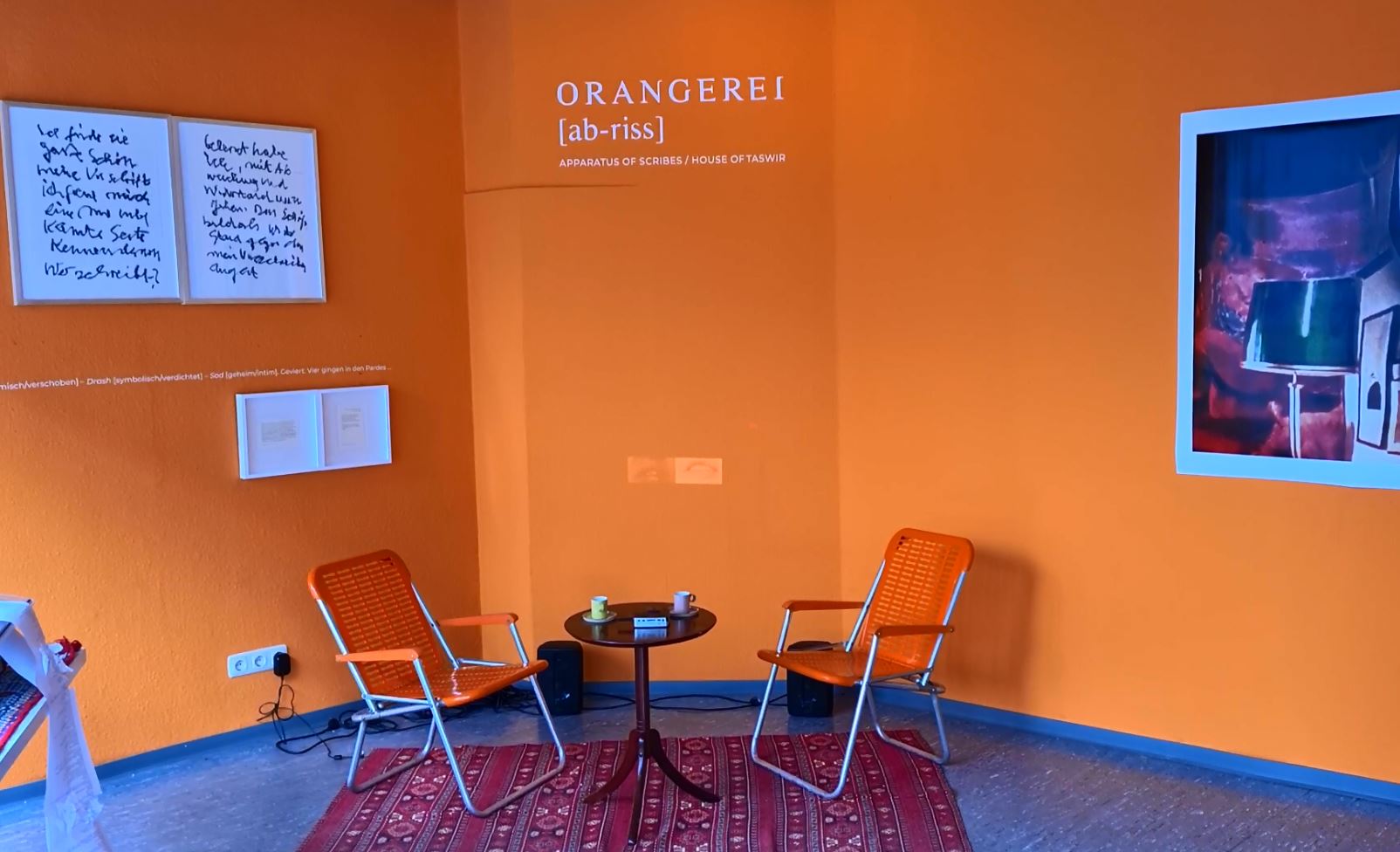
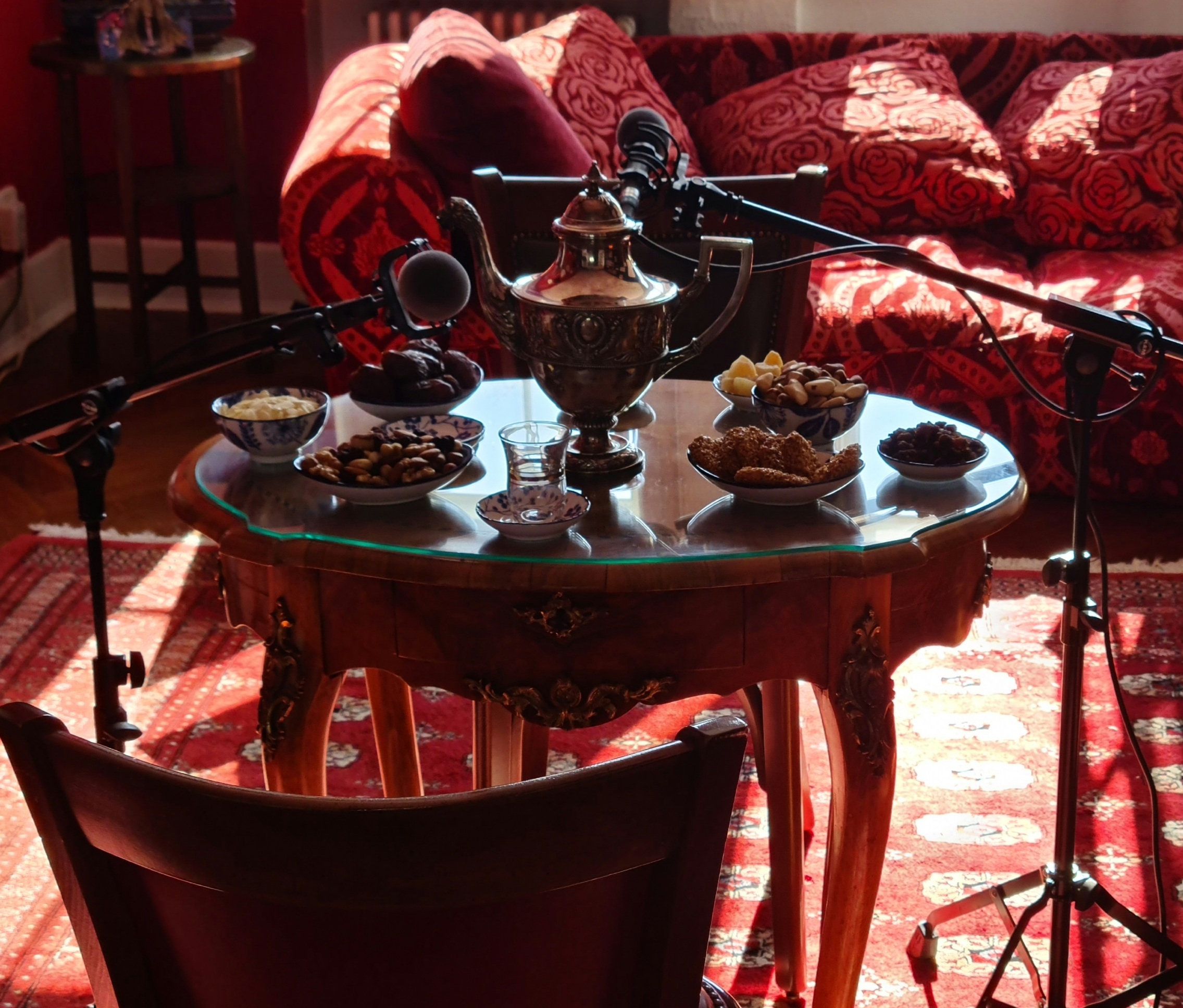
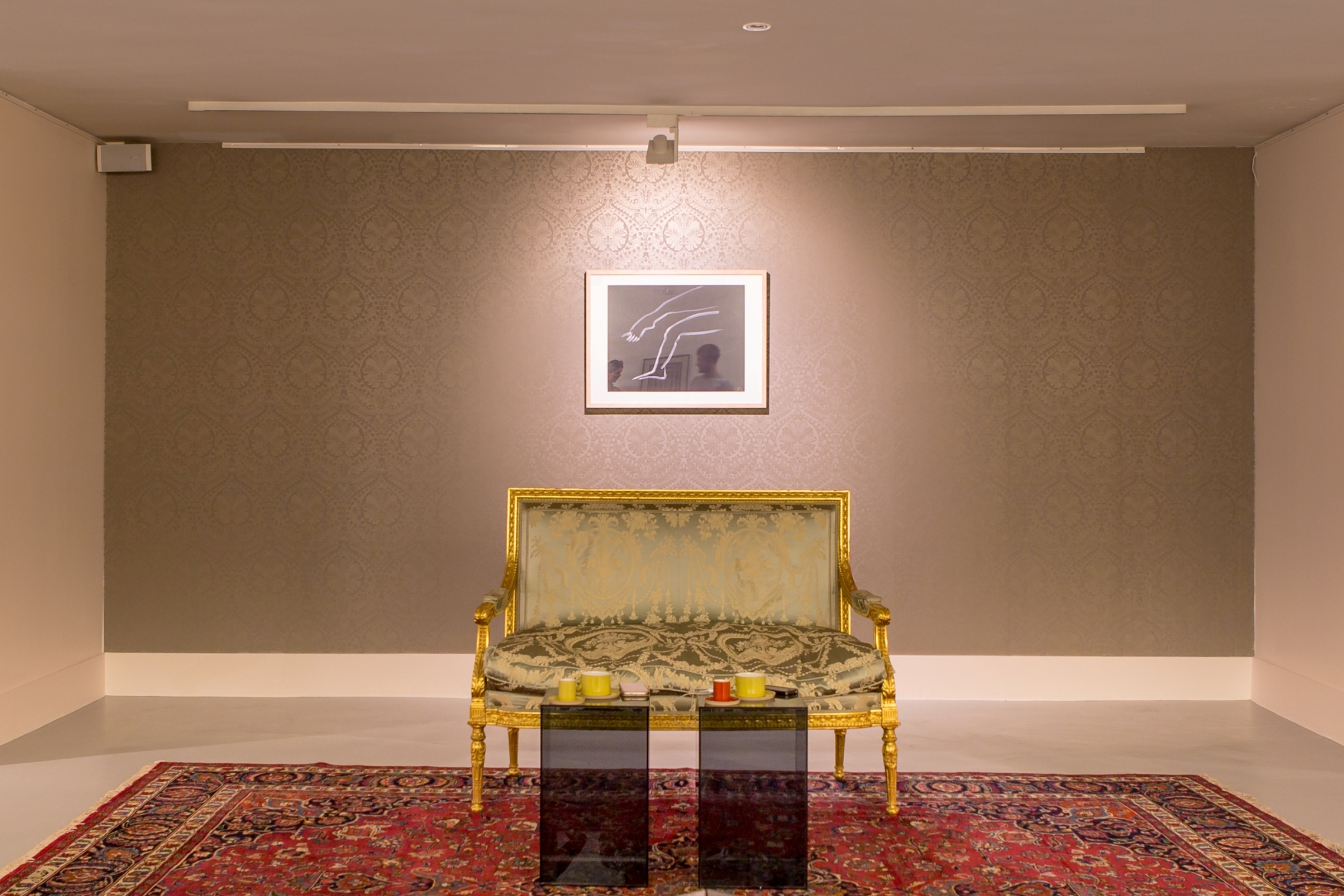
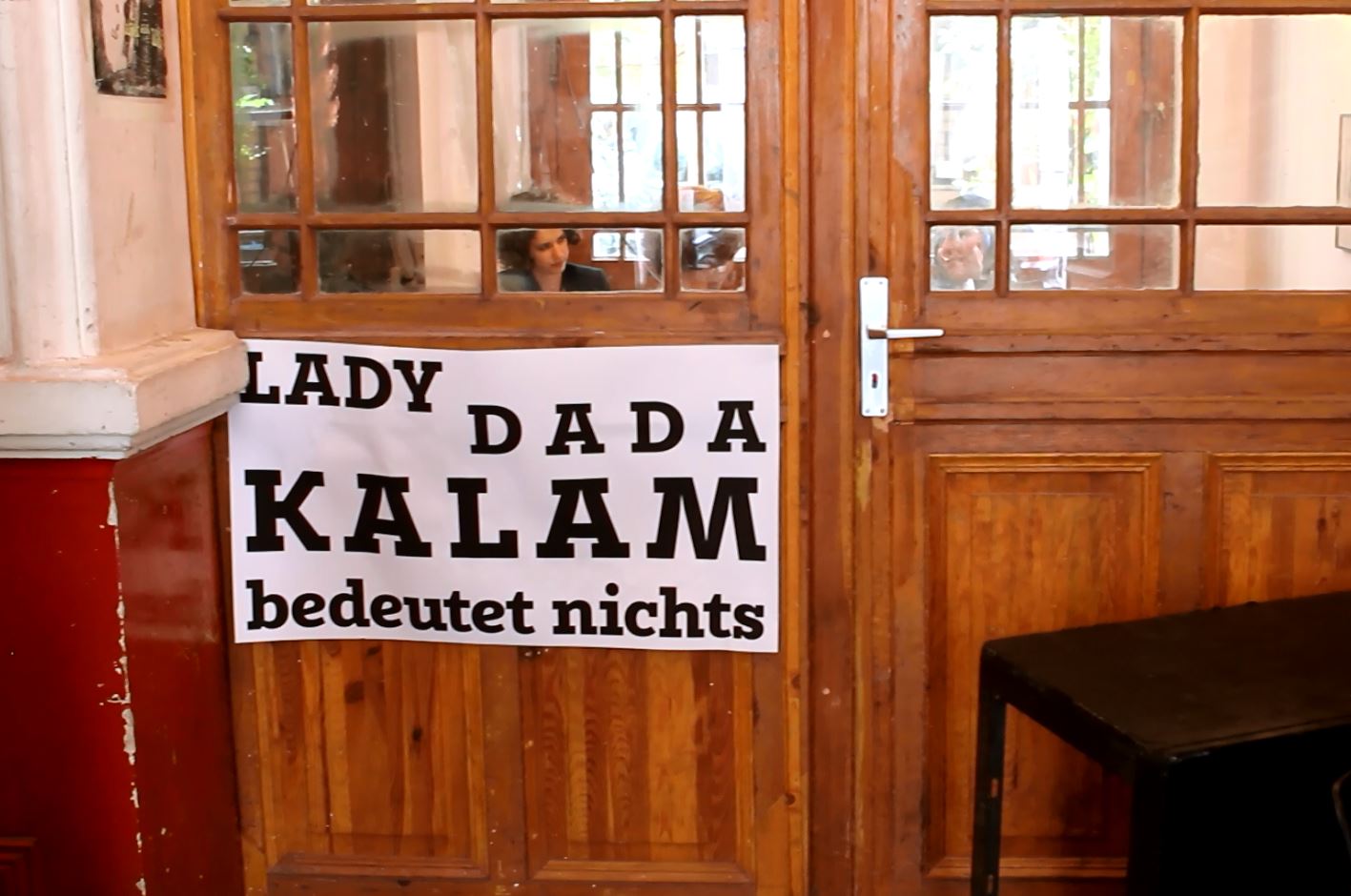
The Grammatical Form of the Scribe
Who is the scribe? The faithful secretary, the third party, the advocate of intimacy, the one who knows how to speak shadows by way of style, by ways of (not) speaking distinctly. The poet, who takes notes consisting of leaps and gaps, in situ and in public, in cut-ups illegible to others.
The secretary and the poet. Both tear holes into the fabric of words; both heed ways and means of estrangement, and both lead language astray. The secretary’s writing is an inner archive of the conversations never published; the poet, whose veil is poetry and whose garment is secrecy of words, writes publicly and in situ.
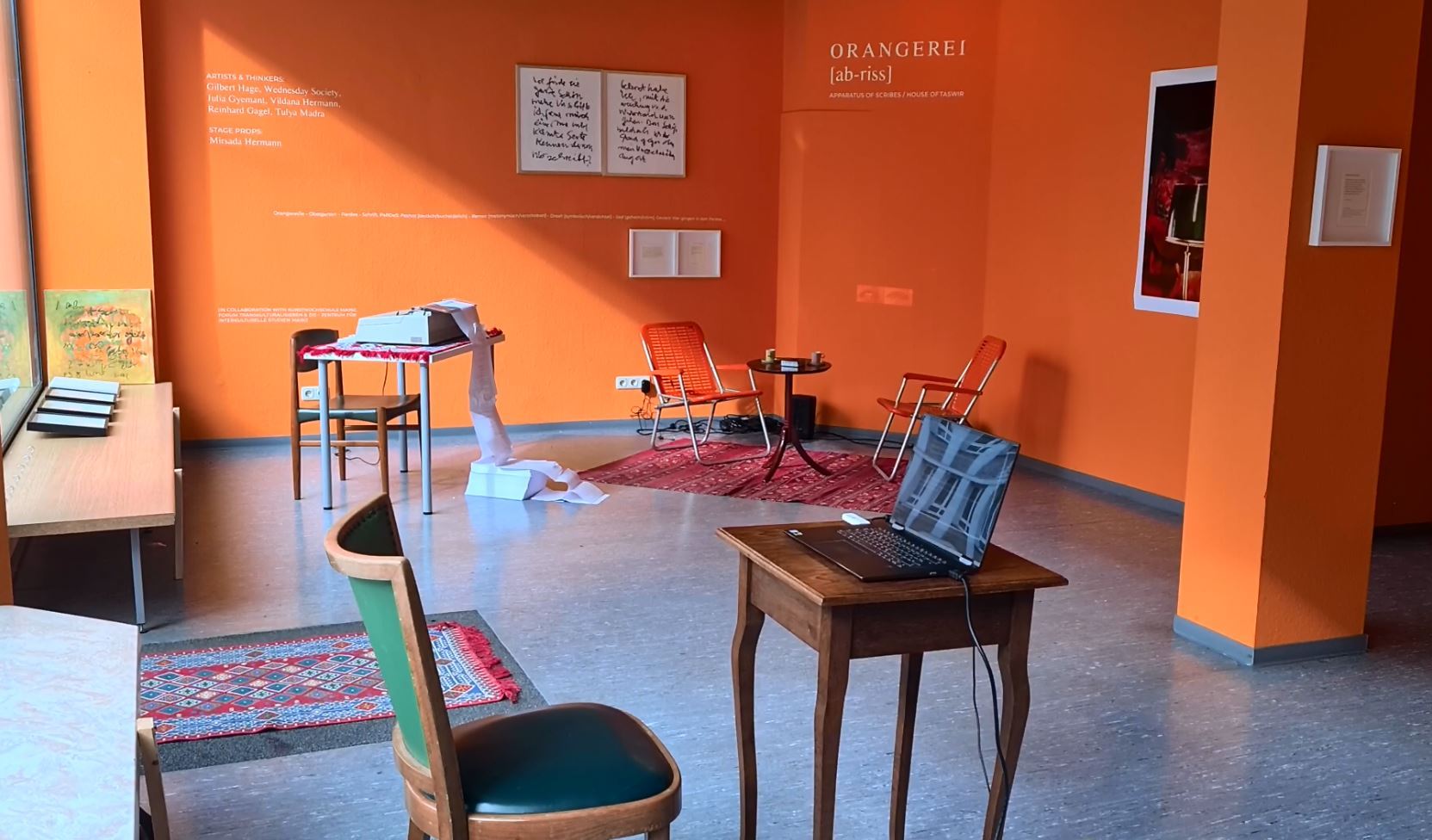
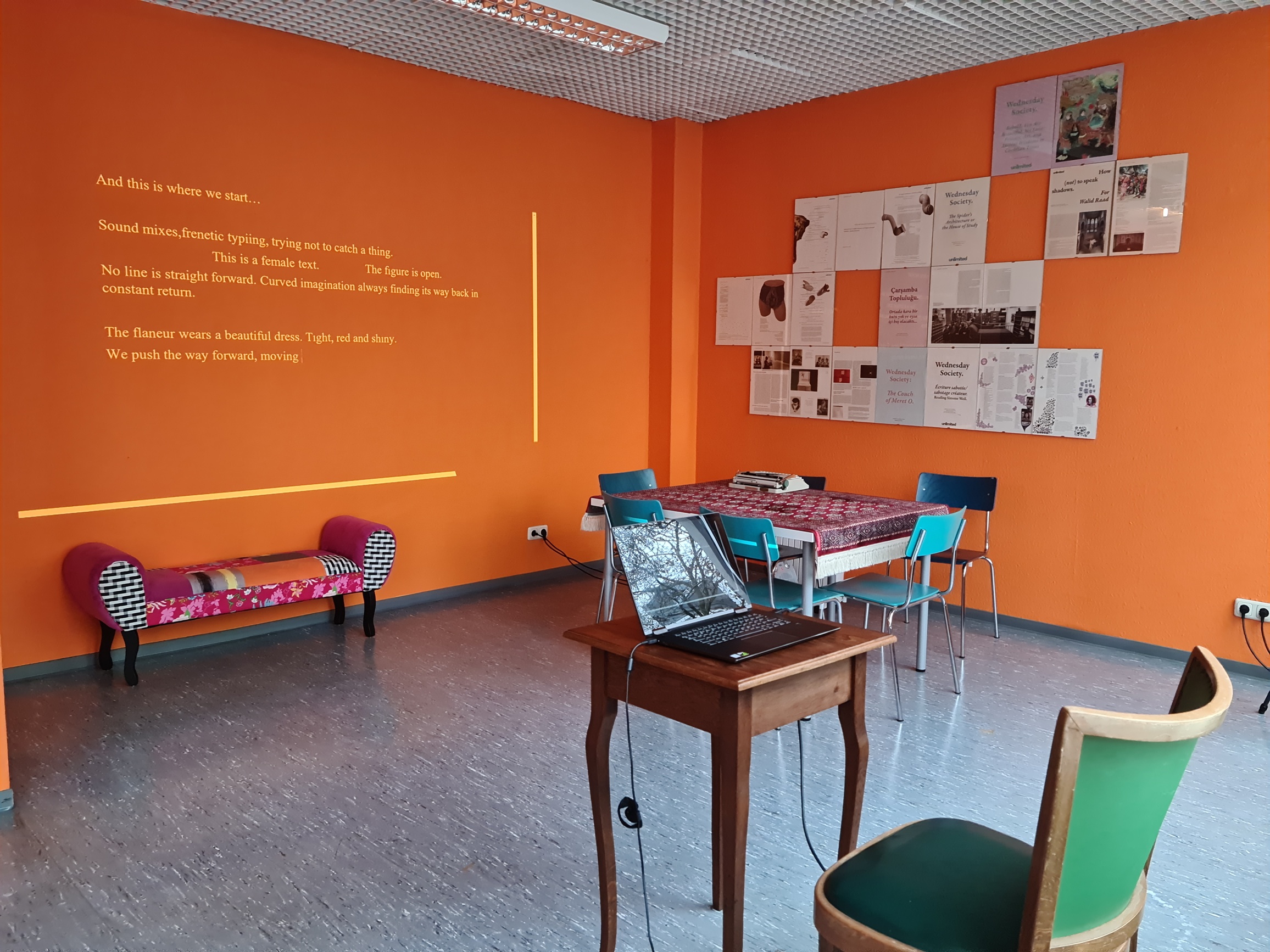
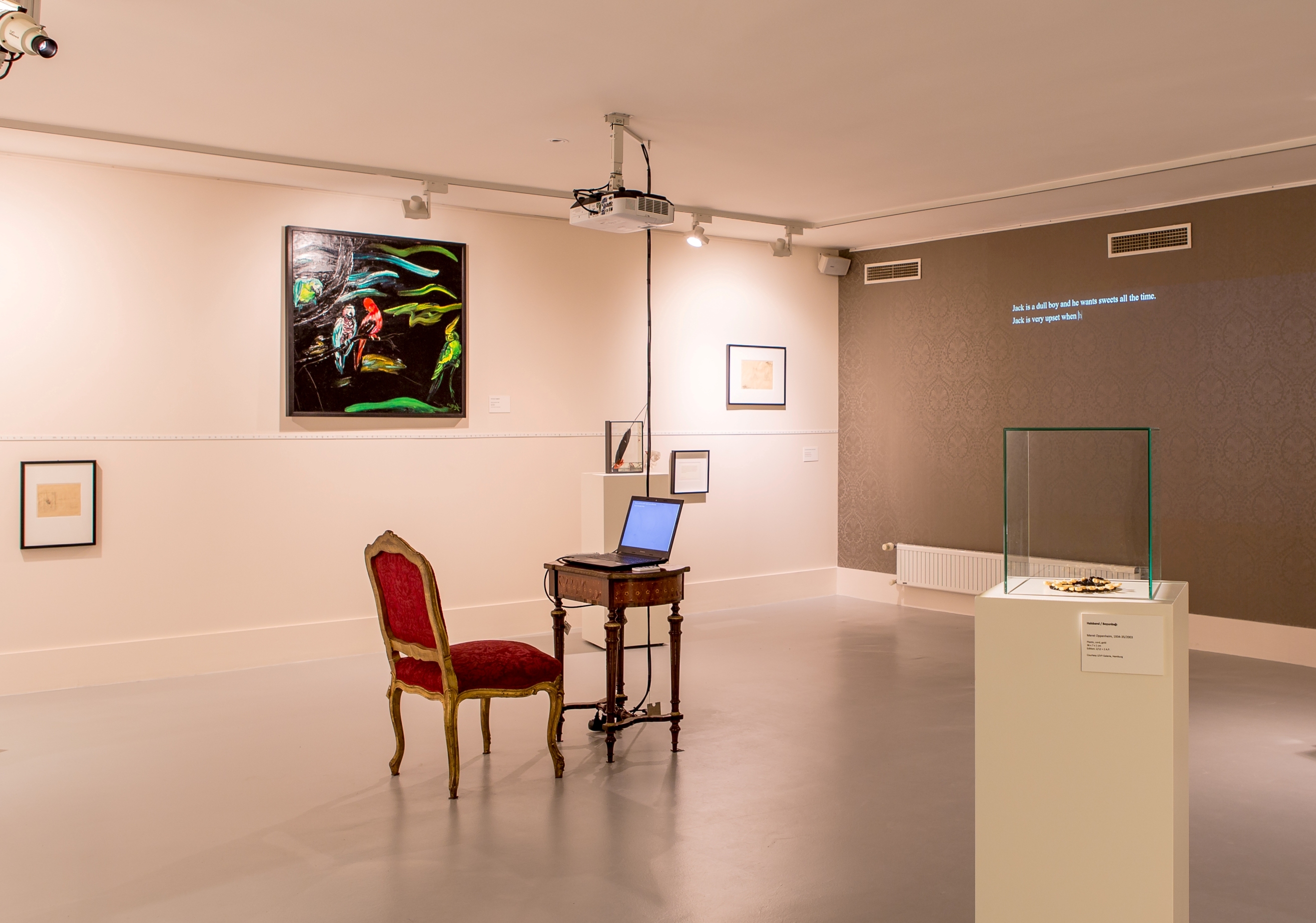
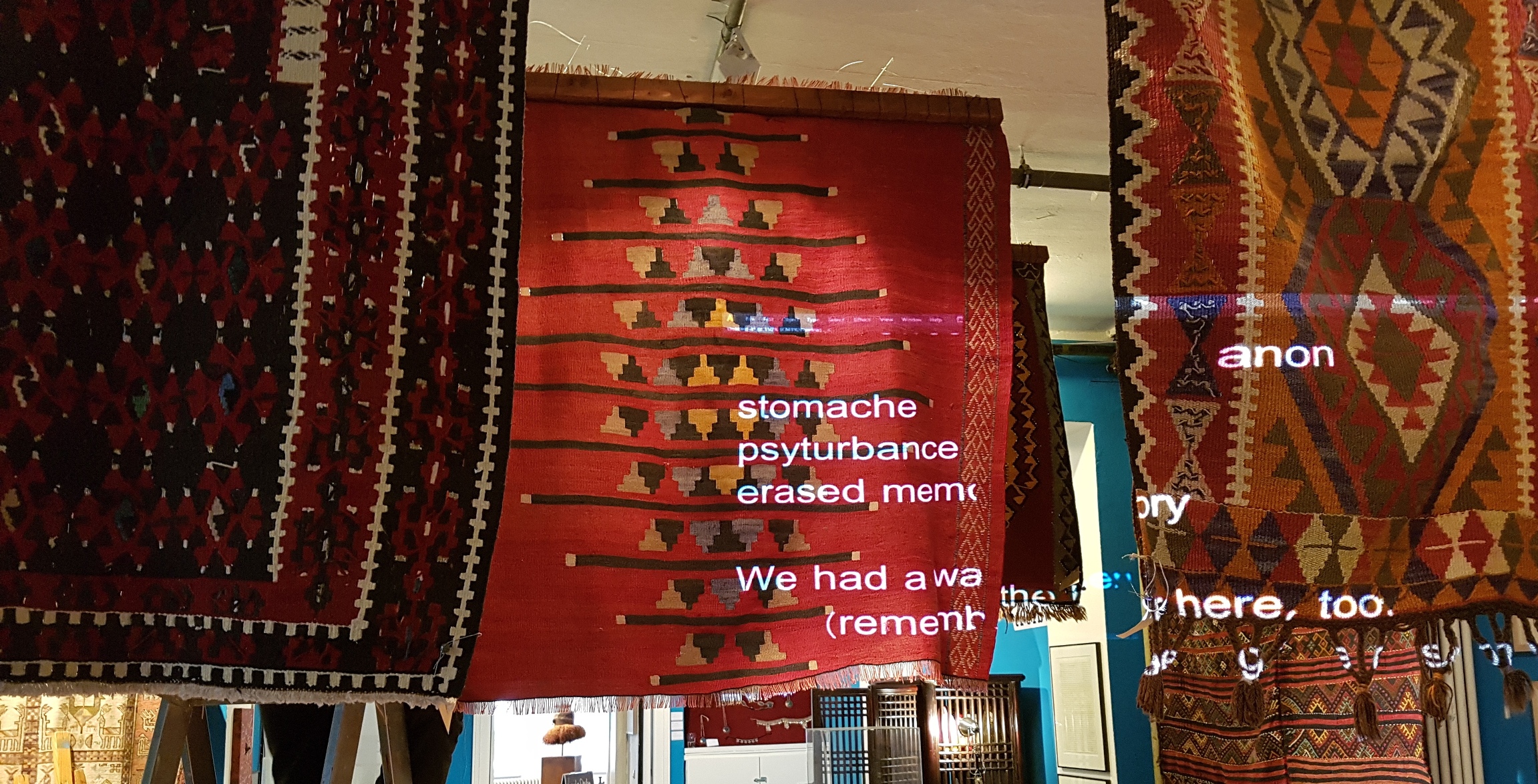
The Grammatical Form of the Tisch:
The Tisch der Gelehrten is an ancient promise. Even though its constellations are never the same, its form remains identical, wherever it appears. It is nomadic and constitutes the diasporic way of thinking. The Tisch is a self-authorized, analogue, spontaneous and continuous place of study, trans-disciplinary to begin with, a crossover of fields, tracing knowledge from outside in, margins to center, associative in method, yet producing materials with the precision of an architect: artistic, psychoanalytic, poetic, textual, literal.
The Tisch der Gelehrten celebrates its own kind of jouissance, and shares its sense of freedom between scholars, artists, students, guests. Themes at the Tisch have no beginning or end. It does not look for anything to show: no outcome, no report, no pedagogy, no education. The talk meanders freely, following its own desire, moving by free association, with one thing leading to another. Interruption and non-sequitur leaps are welcomed, and tangents hold the key to precious things. The Tisch offers çay, sweets, texts, food, and art. It was Karl Marx who coined the term “dancing table” to denote a person’s object of desire. The Tisch’s objects of desire dance as text, as the associative act of speaking, wanting nothing but the joy of dedication.
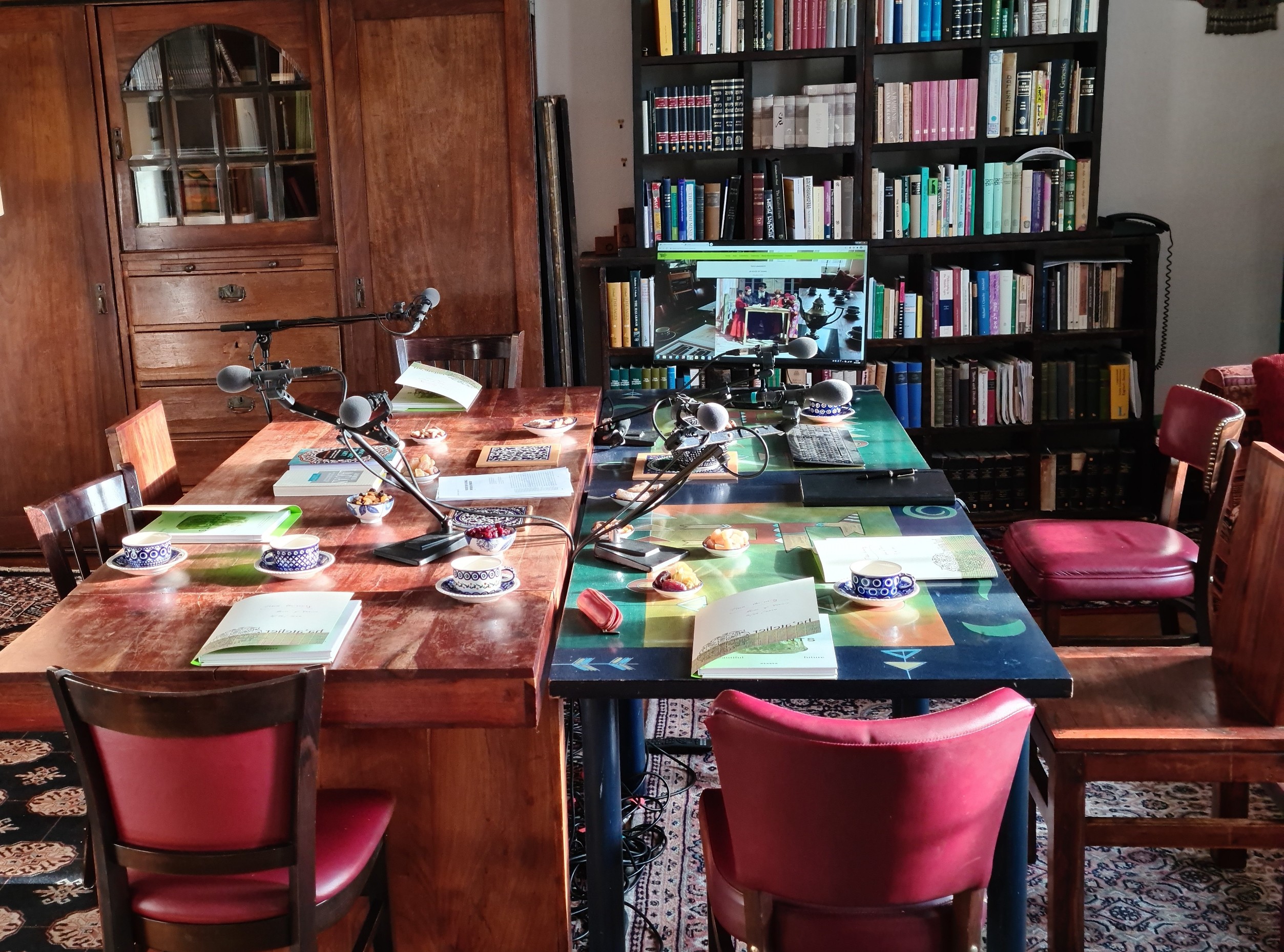
Tisch: A Quorum of Ten
For the Tisch der Gelehrten it is decisive that the curriculum is written backward. The protocolist at the Tisch der Gelehrten writes the curriculum from end to beginning, from thesis to question. The table is preceded by relationships, not by preconceived curricula. Reading lists and associated materials are developed in the process and not always known beforehand. The constellation of Tisch members arises from the à deux form. It is the couple who calls the guests, who invites and takes the subject matter to the table. Every à deux form is an atomistic university, “turn it and turn it, for everything is in it.”[5] The couple transfers the intimacy of the first grammatical form to the Tisch, where the intimacy disseminates and transforms into a public adhesion among scholars. Disciplinary affinities play no role, while associative fissures and precise thematic tangents do. The Tisch der Gelehrten forms a public quorum of ten. “Ten” is the symbolic number of those who publicly establish an idiosyncratic bond of scholars, ephemeral, yet consistent in its recurrent discourse. Other than the à deux form, the curriculum developed at the Tisch der Gelehrten is subject to repetition and variation. It may even be considered a kind of hardware traded back into the university in the future.
The Tisch der Gelehrten is perpetuated as artistic research, as topography, as an atlas, as Meine Kleine Mnemosyne, as Wednesday Society, as Orangerei, and as a garden. Garden: rabbinical PaRDeS. A garden of writing. “Four entered the pardes” . . . et cetera, ad infinitum.
[5] Ben Bag-Bag, Rabbinic scholar, 3rd century.